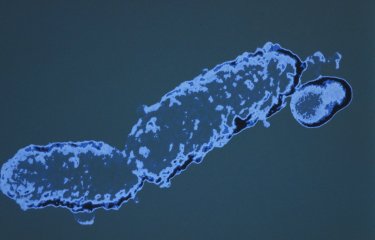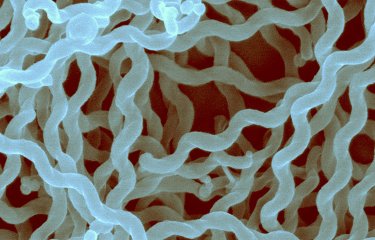Scientists from the Institut Pasteur are investigating CyaA, one of the major toxins of Bordetella pertussis. This bacterium is responsible for whooping cough, a disease that is currently on the rise. Acylation is a biochemical reaction in which an acyl chain is added to a molecule. It was already known that the CyaA protein was acylated in Bordetella pertussis. The scientists used a combination of experimental approaches to demonstrate that the acylation of CyaA is vital in inducing the folding of the entire hydrophobic region of the toxin, thereby giving it a soluble, functional conformation. This important finding sheds light on the acquisition of CyaA toxicity.
Whooping cough is a respiratory infection caused by the Bordetella pertussis bacterium. Contrary to popular belief, it is not a childhood illness. Whooping cough is extremely contagious (one infected person can spread the disease to 15 others, according to Santé Publique France) and is severe when contracted at any age. From 1 to 3% of cases lead to death (source: Santé publique France). For infants under the age of 6 months and at-risk groups (especially pregnant women and the elderly) it is particularly serious and can prove fatal (see our Whooping cough fact sheet).
CyaA, a major toxin of Bordetella pertussis
The adenylate cyclase toxin (CyaA) is a key virulence factor of Bordetella pertussis, the causative agent of whooping cough. "CyaA is synthesized as a protoxin (pro-CyaA) and converted into its toxic form by a biochemical reaction known as acylation," explains Alexandre Chenal, Head of the BiophysiCyaA group in the Biochemistry of Macromolecular Interactions Unit at the Institut Pasteur. CyaA is then secreted, invading our cells and subverting host defenses.
"The CyaA toxin is therefore acylated in the bacterium before being secreted and intoxicating human cells, including cells in the innate immune system." One notable example of these immune cells is alveolar macrophages, which defend against pathogens in the alveoli (air sacs) in our lungs. "So the action of CyaA leaves the way open for the lungs to be colonized by Bordetella pertussis," continues the scientist.
The cytotoxic activity of CyaA is only possible if it undergoes acylation. "We already knew that acylation was crucial in giving bacteria the ability to intoxicate human cells, but we did not understand the molecular origins of the process."
Understanding the effects of acylation
To shed light on the effects of acylation, the scientists compared the functional and structural properties of the pro-CyaA and CyaA proteins. "Using a combination of experimental approaches, we demonstrated that CyaA acylation is vital in inducing the folding of the entire hydrophobic region, giving the protein a soluble, functional conformation," explains Alexandre Chenal, for whom this discovery was part of a broader basic research effort to elucidate the virulence factors of B. pertussis and improve laboratory-developed biotechnological applications based on the use of CyaA. In 2018, his team revealed a mechanism of activation for CyaA which explains the folding of a disordered region of the toxin and its subsequent activation.

In technical terms, the 2019 research drew on the latest mass spectrometry analysis methods (developed by Thibaut Douché and Mariette Matondo at the Institut Pasteur) and demonstrated the excellence of the HDX-MS activity in the Biological MNR platform (developed by Sébastien Brier, also at the Institut Pasteur). The platform was recently set up on the Institut Pasteur's Paris campus. "In addition to its scientific interest, this integrative biology research highlights the quality and synergy of the contributions to research made by the Institut Pasteur's platforms," emphasizes Alexandre Chenal. The FASEB Journal, which published this research, is an internationally influential scientific journal published in the United States by the Federation of American Societies for Experimental Biology (FASEB).
Source
Post-translational acylation controls the folding and functions of the CyaA RTX toxin, The FASEB Journal, June 21, 2019
Darragh P. O’Brien,*,1 Sara E. Cannella,*,1 Alexis Voegele,*,† Dorothée Raoux-Barbot,* Marilyne Davi,* Thibaut Douché,‡ Mariette Matondo,‡ Sébastien Brier,*,§ Daniel Ladant,*,2 and Alexandre Chenal*,3
*Institut Pasteur, Chemistry and Structural Biology Department, and §Biological NMR Technical Platform, Center for Technological Resources and Research, UMR CNRS 3528, Paris, France;
†Université Paris Diderot Paris VII, Sorbonne Paris Cité, Paris, France;
‡Institut Pasteur, Proteomics Platform, Mass Spectrometry for Biology Unit, USR CNRS 2000, Paris, France






